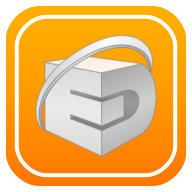


|

|
|
JPG - Export Joint Photographic Expert Group (JPG or JPEG) is technically a compression technique not a file format. But wide spread common usage has made JPG a file format for all practical purposes. The uncompressed contents of a JPG file will be a TIFF (EazyDraw’s implementation) or BMP bitmap image. The bitmap is compressed with a JPG compression method. Since a JPG file is actually a JPG compressed TIFF file, all the parameters documented for TIFF exporting apply. Follow the TIFF link to learn about these parameters, especially the Dots Per Inch (DPI) parameter and size/quality related issues. The LZW and Packed Bits compression methods documented in association with the TIFF discussion do not apply to JPG compression.
Proper selection of the correct export parameters depends on the ultimate use of the exported file. It is usually best to determine settings by experimenting, possibly with test files. Test first with high compression, viewing on the ultimate target medium. There will probably be unacceptable defects in the image. Decrease the compression value (go to 0.5 to begin a binary search) and recheck, continuing until defects are barely perceivable. In many cases care in choice of the compression value will result in very small image size with fully adequate viewing quality. This can be especially important for web graphics that require communication over finite bandwidth networks. In some cases recipients software applications may require JPG file format. If loss-less image quality is required, just set compression to 0, and pretend that JPG is really a file format. The Antialias check box selects the use of macOS’s antialiasing algorithms during preparation of the image. In some cases it may be best not to use this capability. If antialiasing is used when viewing the image, it would be applied twice. If you need exact control over the color of each pixel be sure to turn off antialiasing as it will modify individual pixel color on color contrast borders. Interpolation is applied to Bezier paths during preparation of the image. This normally has little affect on the image. If exact control over placement of pixels of lines and curves is needed select no interpolation. There are 3 levels and an automatic selection. |